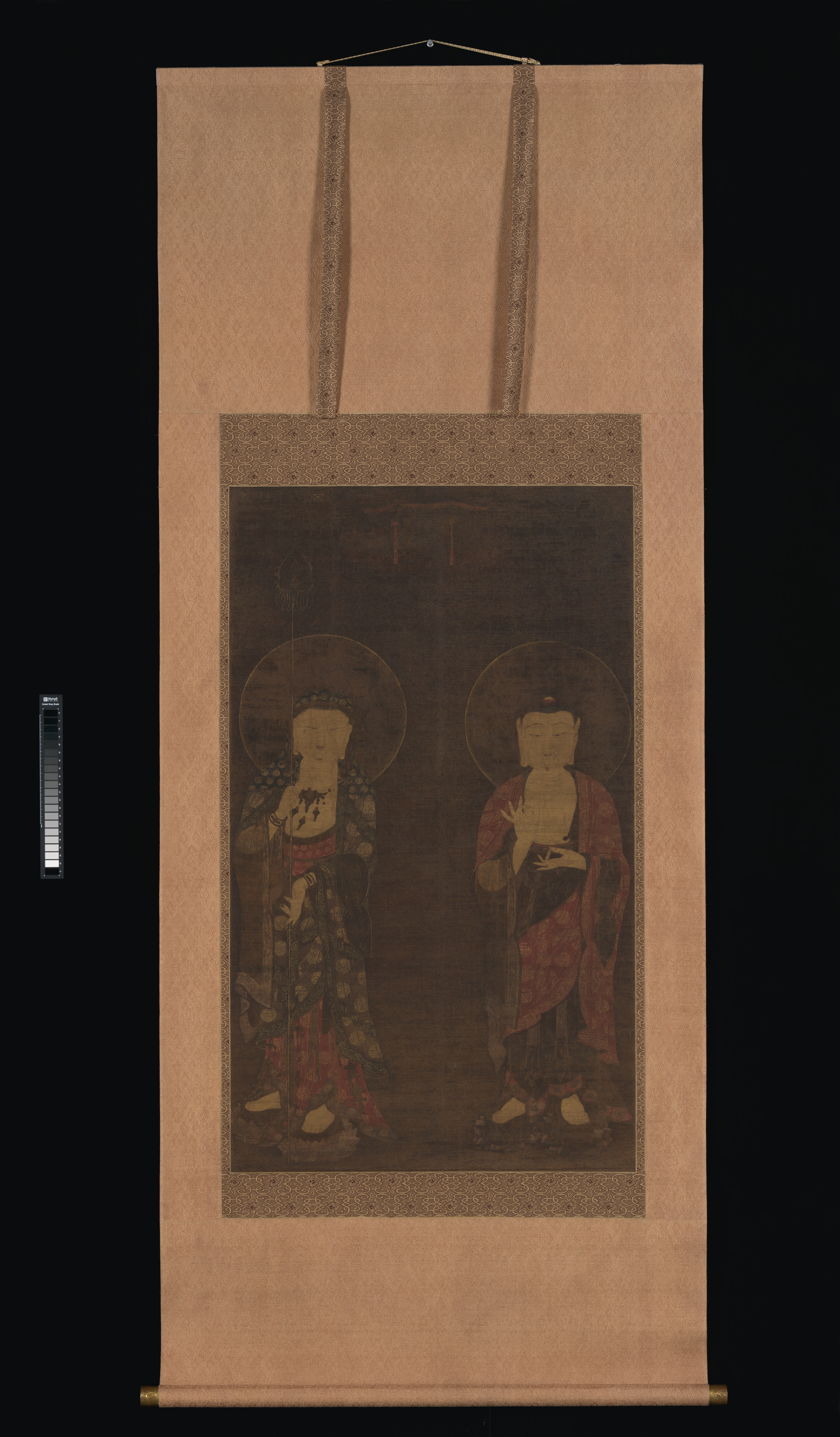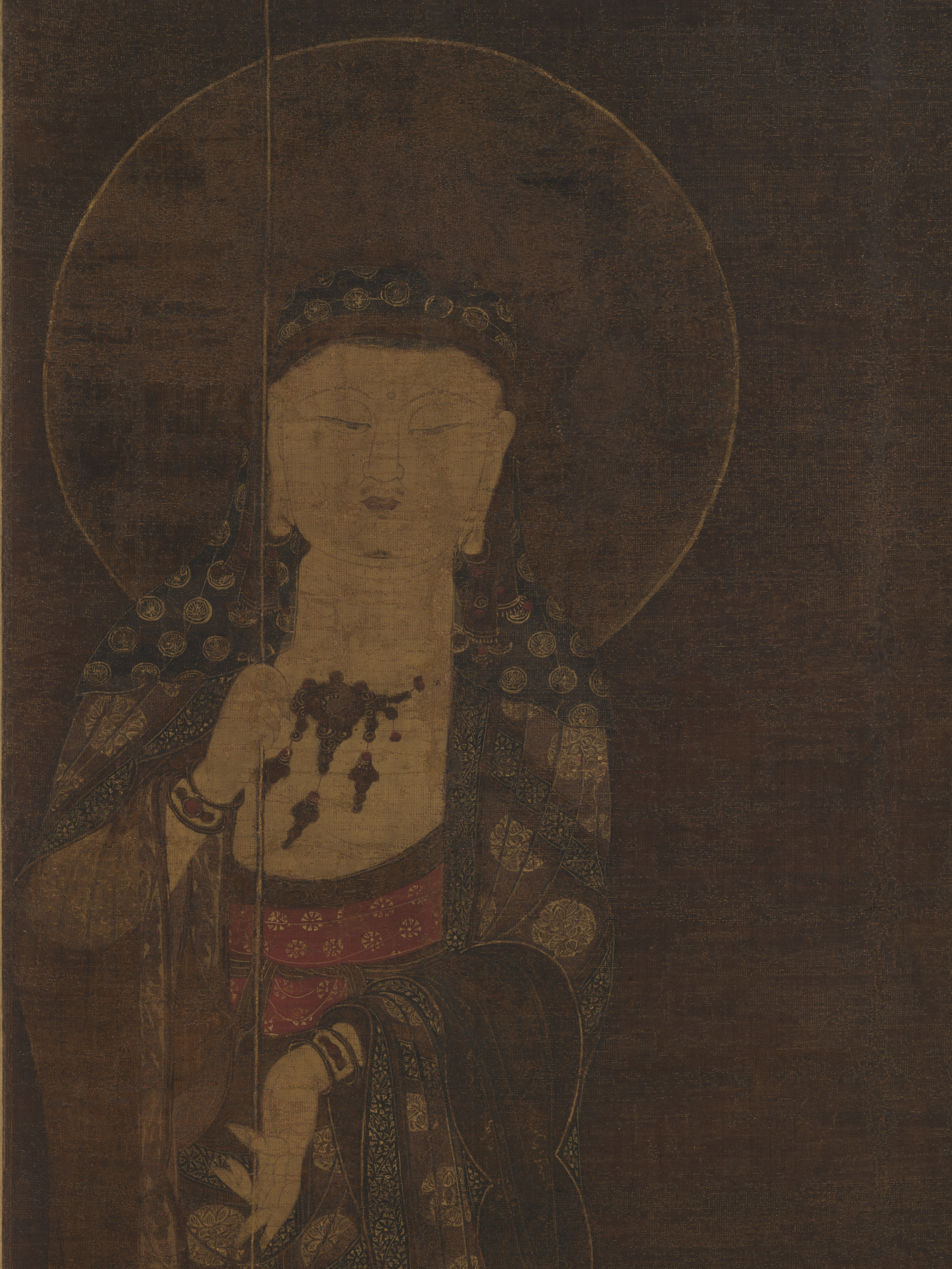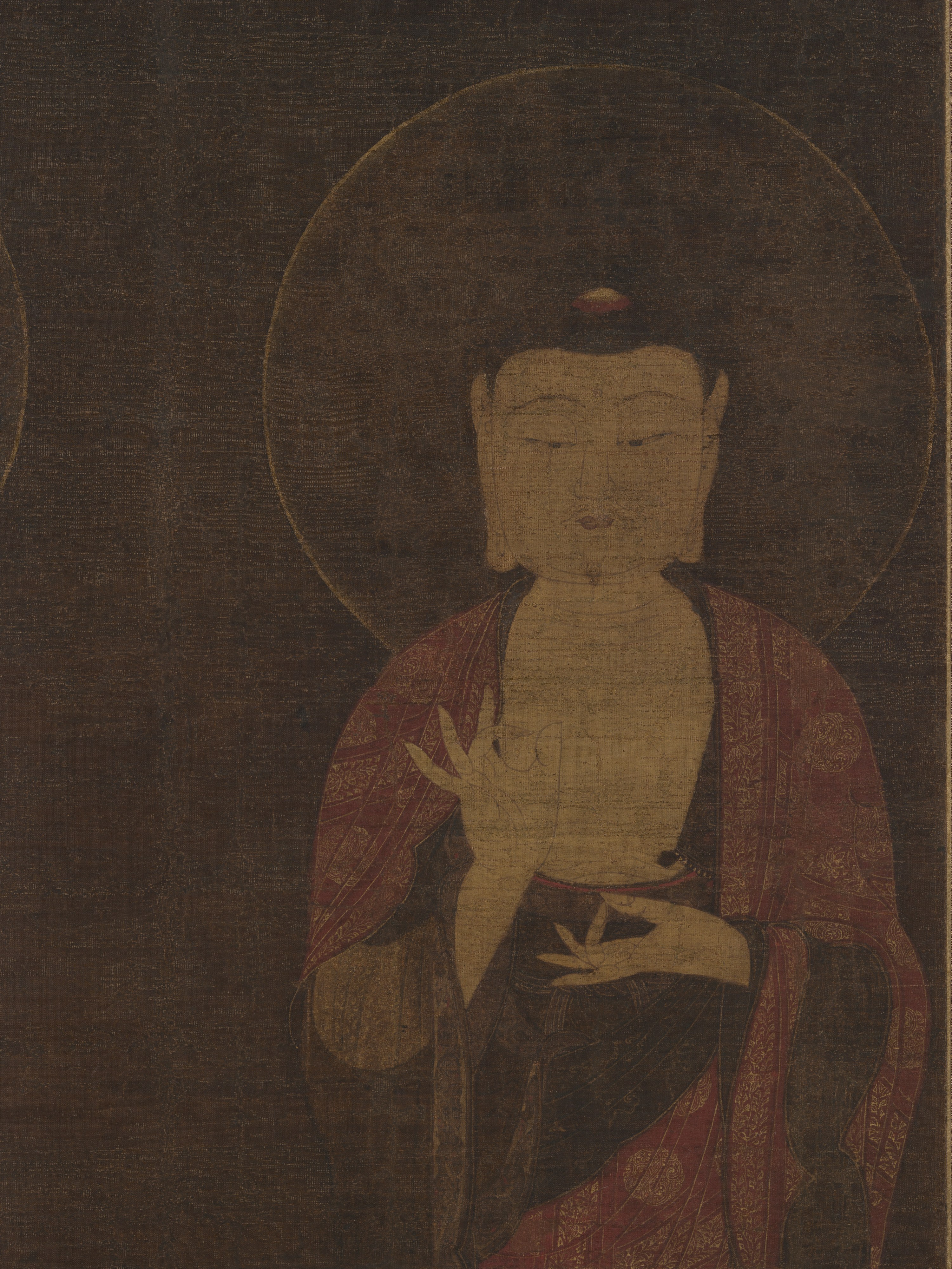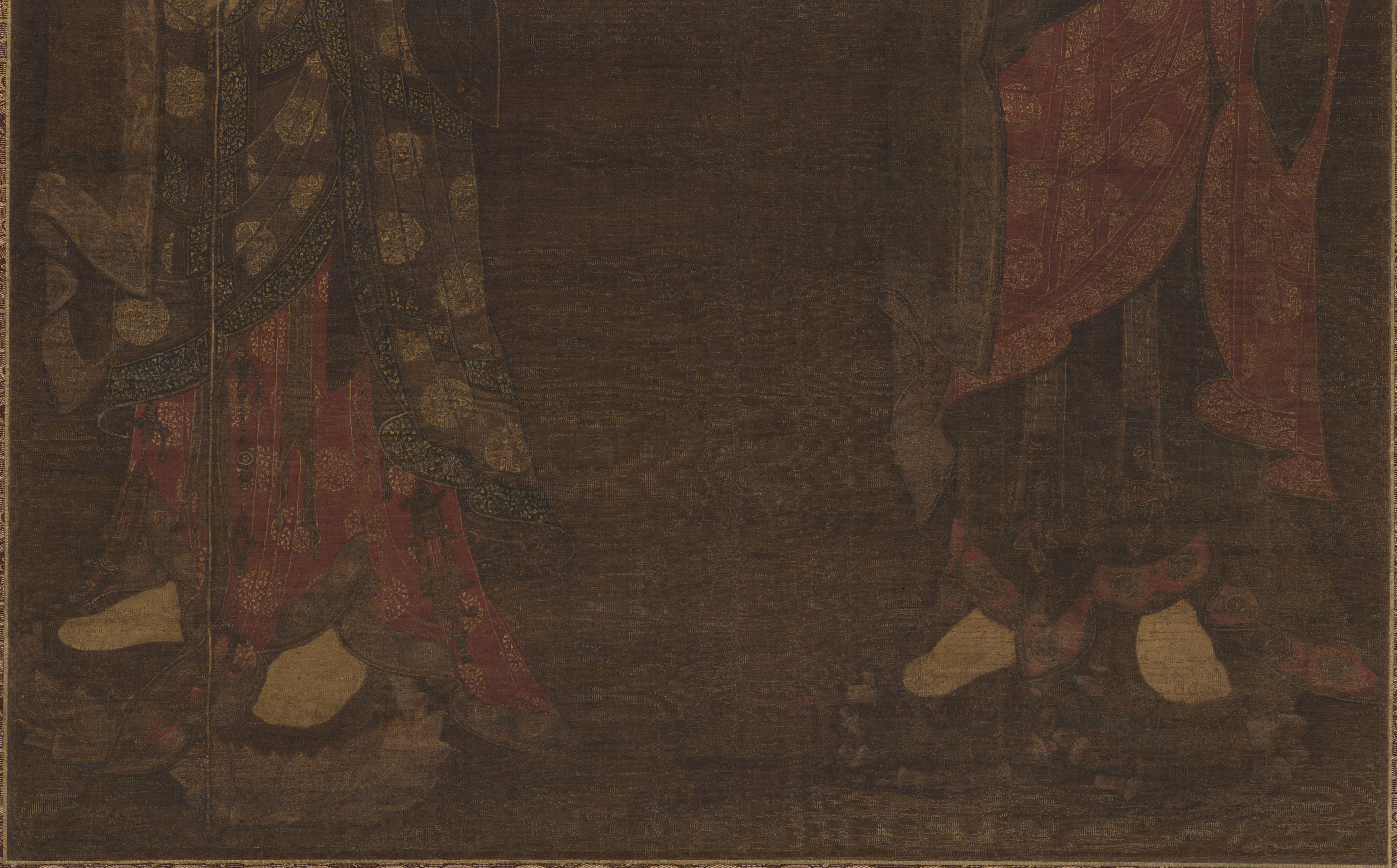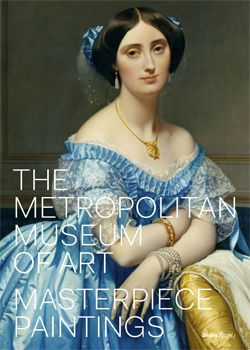Amitabha and Kshitigarba
Not on view
The combination of the Amitabha Buddha (Korean: Amita) and the bodhisattva Kshitigarbha (Korean: Jijang)—on the right and left, respectively, standing under a canopy—is the only known example of this iconography in Goryeo Buddhist painting. A more typical composition features these two figures with the bodhisattva Avalokiteshvara (Korean: Gwaneum), forming a triad in which Amitabha is the central deity, or just the two bodhisattvas. Both deities in this painting enjoyed a strong following during the Goryeo dynasty due to the popularity of Pure Land Buddhism. Amitabha Buddha offered the promise of easy salvation and entry into the Western Paradise; Kshitigarbha provided guidance and redemption in death and the afterlife.
Buddhist paintings of the Goryeo dynasty were renowned for their delicacy, refinement, and exquisitely rendered gold-painted designs. Pigments were applied to the front and back of the silk, intensifying their hues and luminosity (though some have faded from exposure to light over time).
Due to rights restrictions, this image cannot be enlarged, viewed at full screen, or downloaded.
This artwork is meant to be viewed from right to left. Scroll left to view more.


